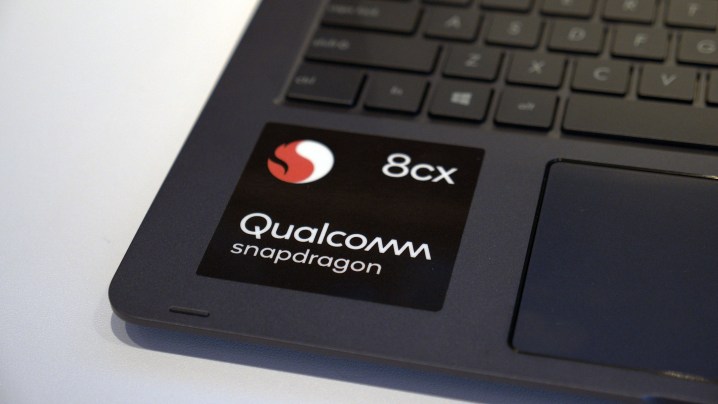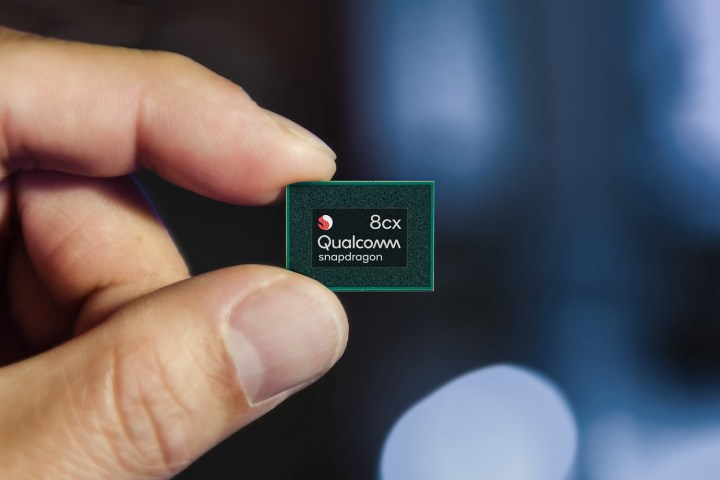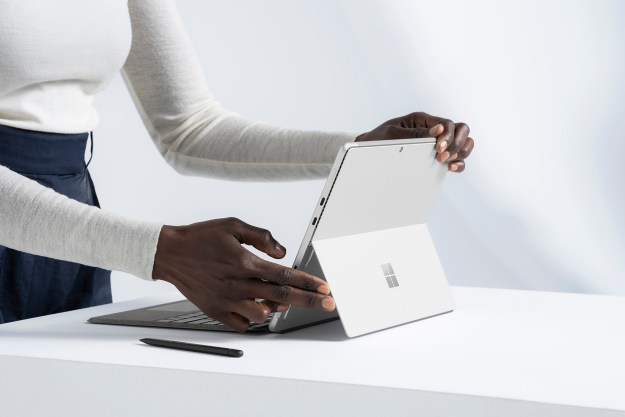
The market is saturated with a wealth of the best laptops and is poised to become even more competitive as the year draws to a close. Alongside new entries from typical chip makers like Intel and AMD, Qualcomm is entering the laptop market in a big way with systems powered by its capable Snapdragon 8cx system on chip (SoC).
Set to go head to head with Intel’s mid-range Core i5 CPUs and the
Pricing and availability
The first Snapdragon 8cx-equipped laptop, the Samsung Galaxy Book S, will start shipping out in September 2019 with more
The Samsung Galaxy Book S starts at $1,000, so Qualcomm is targeting the midrange of mainstream
Architecture

Like previous Snapdragon designs, the 8cx is a system on chip, or SoC, that combines a number of different controllers and processors into a single chip. It’s built on TSMC’s 7nm process — the same one used by AMD’s new 3000-series Ryzen processors — and combines four Kryo 495 Silver, high-efficiency CPU processing cores, with four high-performance Kryo 495 Gold processing cores. This is the big/little core setup that Qualcomm has used in its Snapdragon SoC designs for years, delivering high performance as and when required and high-efficiency otherwise, to provide great battery life without sacrificing power.
This 4 + 4 setup is slightly different to the 1 + 3 + 4 setup employed in Qualcomm’s other high-end Snapdragon SoCs, the 855 and 855+.
Alongside those general processing cores, the 8cx also integrates Qualcomm’s Adreno 680 graphics processor (GPU) with full support for DirectX12. Although we don’t know the clock speed it will run at yet, we know it’s an advanced form of the Adreno 640 found in the Snapdragon 855 and 855+. It also supports the latest H.265 video codec and HDR.
Performance
This is the big question for the new Snapdragon chip. Can it really compete with more typical laptop chip providers like AMD and Intel? Early, leaked benchmarks suggest it can. We’ve seen leaked performance numbers for the 8cx CPU cores compare favorably to Intel’s 8th-generation Core i5 CPUs. Early tests picked up by TomsHardware showed it achieving great scores in Microsoft Office tests, especially.
How it will compare against the more capable, upcoming Intel Ice Lake and Comet Lake mobile CPUs, remains to be seen.
Graphics performance should be impressive, with Qualcomm claiming that the 8cx could be twice as capable at 3D rendering than the Snapdragon 850 and three times that of the Snapdragon 835. Double the speed of a smartphone chip may not seem like much, but it should be at least comparable to Intel’s onboard UHD graphics. We would expect 11th generation graphics in Intel’s Ice Lake chips to be more impressive, but we’ll need to await direct comparisons to know for sure.
We do know that the 8cx will support up to 16GB of 8-channel DDR4 memory, so there’s plenty of scope for high-bandwidth memory access for each of the chip’s cores. It also suppots NVMe SSD storage, so devices built using the Snapdragon chip will support some of the fastest storage solutions available today, for snappy operation. That should help speed up system boot times and application load times over more traditional storage solutions, without impacting weight or laptop size.
It is worth noting, however, that now all Windows applications will run natively on Qualcomm Snapdragon SoCs. Emulation makes that possible, but performance using such methods isn’t typically as strong.
Efficiency and connectivity

A big selling point of Qualcomm’s 8cx chip is that it will be efficient. Qualcomm has previously stated that with its big/little core design, we should see
Like Intel’s Ice Lake CPUs, which when combined with the new chipset give support for new wireless connection options, the Snapdragon 8cx also has some strong support of its own. It enjoys support for Wi-Fi 6 (802.11.ax) as well as 802.11ad, Bluetooth 5, LTE connectivity, and MU-MIMO for managing multiple high-speed connections. It also has USB 3.1 Gen 2 support for fast wired connections over USB-A and USB-C.
Editors' Recommendations
- Qualcomm says Oryon chips are faster than Macs’, but we’ve been here before
- Qualcomm claims its laptops destroy Intel chips in AI tasks
- Instagram appears to be down. Here’s what we know so far
- Lenovo ThinkPad X13s hands-on review: ARM-powered ThinkPad
- Qualcomm takes on the Apple M1 with new Snapdragon 8cx Gen 3 for PCs




